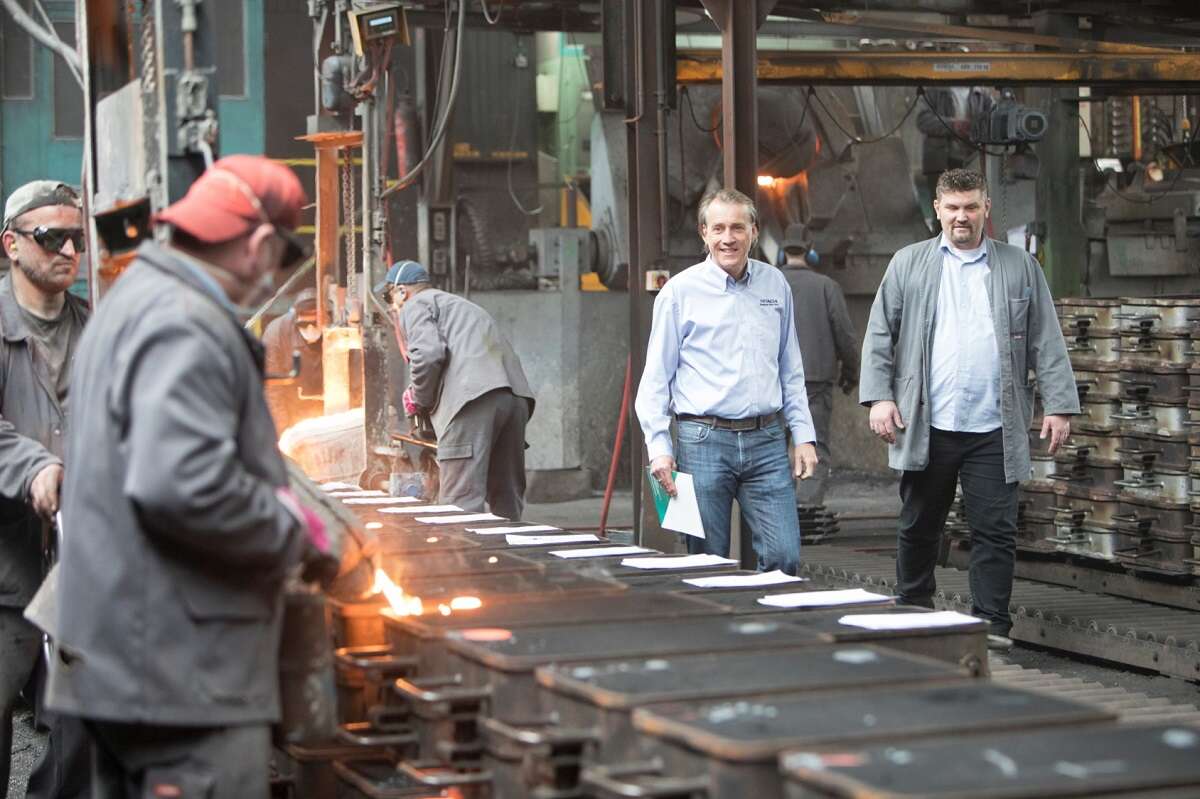The Industry 4.0, or Smart Manufacturing Revolution, continues to transform the way we work. With advancements such as greater computing power and connectivity, businesses are able to leverage the Internet of Things for increased process efficiency. Foundries have not been exempt from this revolution, and the Foundry 4.0 movement means metalcasters must evolve to remain competitive.
Many foundries rely on Optical Emission Spectrometers (OES) to monitor and control melt chemistry, and the results from the OES analyzer play an integral role in guaranteeing high quality castings. However, the software platforms that control this important process have remained relatively unchanged, until now.
Learn more in this post, as our product manager, Wilhelm Sanders, answers questions from our webinar “Advanced Software Features in Optical Emission Spectrometers (OES) for Foundry 4.0.”
Q: is the GRADE or GRADE SEARCH PLUS software available independent of the instrument? what is the cost?
Yes, it is. To enquire about cost, please send us your information via our website. If you want to give it a try first, you can download a free 60-day trial here. http://www.keytometals.com/Hitachi-Hightech.aspx
Q: For each particular grade (example AISI 4140) does the database have different mechanical properties data for the different heat treatment conditions?
Yes, the material information provided in Grade Database is thorough and does include physical properties and heat treat information. Please feel to try on your own using our 60-day free trial offer: http://www.keytometals.com/Hitachi-Hightech.aspx
Q: Can the Grade Database be used for solder manufacturing?
Yes, there are many tin and lead base materials available in the database including solder alloys.
Q: Are the Global Standards like DIN & ASTM, etc. updated automatically? So, when you have results and are looking for matches, you will see the DIN and the revision level?
The standards are updated regularly, but not automatically. We provide an annual update via our website that can be downloaded. Revision number is shown on the grade so that you know which version you are comparing against.

Q: What small low-cost Hitachi spark emission spectrometer would you recommend for small consultancy doing failure investigation on stainless steels, steels and copper and aluminum alloys?
Our smallest benchtop optical emission spectrometer is the FOUNDRY-MASTER Smart. You can learn more about our entire benchtop OES line here.
However, please contact us for a more detailed discussion about your requirements, we can help you navigate the choices available to you.
Q: How often do you need to calibrate the spectrometer?
There is no set time interval or number of measurements interval after which a calibration is required. The spectrometer needs to be calibrated if it has drifted to the point where it is no longer accurately measuring your samples. The way to determine this is to regularly measure a Quality Control sample which has defined confidence intervals. If any measurement falls outside those confidence intervals, then it is time to restandardize. Please check out our free comprehensive guide for more details.
Q: Do you need to have standardized samples, or do they come with the spectrometer?
The instrument comes with a set of recalibration samples called setting up samples or "SUSs" depending on which calibrations are included on the spectrometer (for steel and iron for example we are talking about five samples). Certified Reference Materials (CRMs), which are the best choice for quality control samples are not included with the instrument, however, they can be spec'd out and purchased with the instrument.
Q: Could you tell us briefly about your handheld XRF instruments and can they determine Carbon?
HHXRF are great tools for most common metal grade analysis, however, HHXRF does not have the ability to measure Carbon due to physical limitations of the detector. Magnesium is the lowest atomic number that HHXRF measures. To learn more about our HHXRF line visit us here.
Q: Can you show Wilhelm's contact info again?
If you’d like to learn more about our OES products how they can support your business, you can book a one-to-one consultation using the form below.
Book a Demo